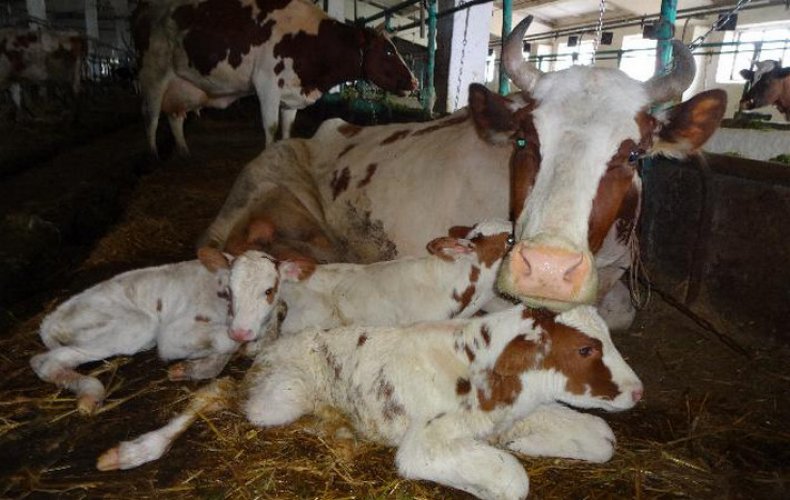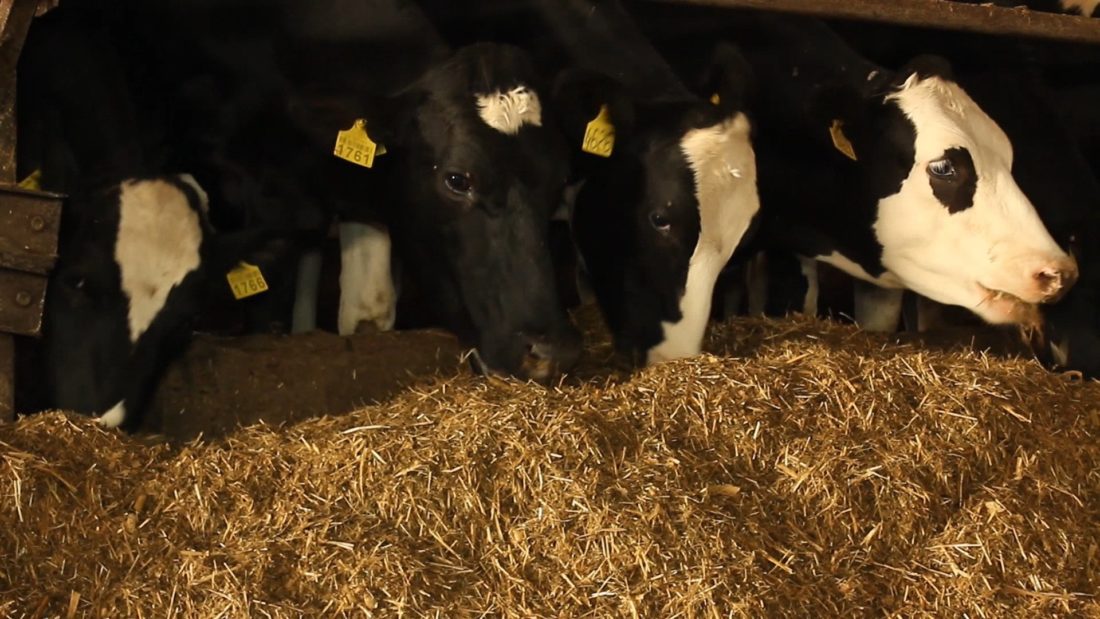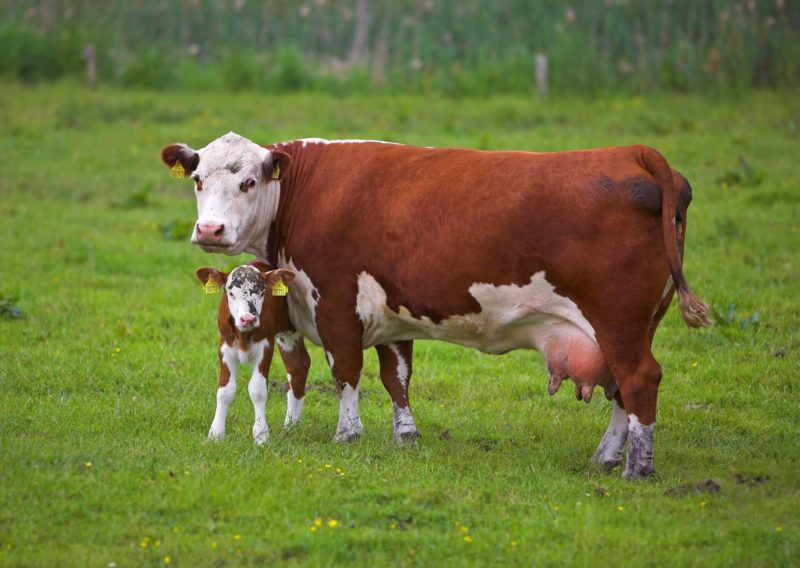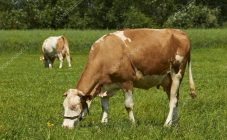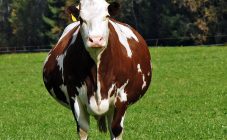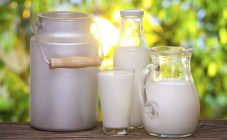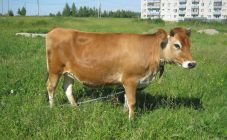Content:
Amateur livestock breeders starting to raise cattle are inevitably faced with such a process as calving a cow. Childbirth has a positive effect on the animal's body. Thanks to them, the cow stays healthy, consistently yields high-quality milk. In addition, a new small calf appears on the farm, that is, the number of livestock increases. During this period, cattle needs special care. The owner must know when to launch the female, how the calving goes, what the service and the transit period for cows are.
Care rules
Having a cow in the household is a profitable business. A healthy cow gives a large amount of nutritious milk, bears offspring. But the animal must be properly looked after. Among the basic rules are:
- The barn or barn should be in a quiet place. The cattle, despite its large size, is rather shy. Any stress can negatively affect the health of the animal and its milk.
- Keep the barn warm, clean and ventilated at all times. A thick layer of straw is placed on the floor. It is necessary to have feeders in the form of a nursery, compartments with clean water. The floor should be slightly sloped. This is to ensure that the slurry and manure itself do not accumulate in the stall.
- In the summer, cows are driven out to pastures. There they spend all daylight hours. They are driven into the barn at night.
- Cattle are fed in the morning and evening. The summer diet contains compound feed, mash, grain feed. In winter, feeding becomes more nutritious, since the animals do not go out to feed on fresh grass. The winter diet consists of compound feed, bran, cake, silage, hay, potatoes, carrots and other root crops, pumpkin. Regardless of the season, heifers and bulls should have clean water at room temperature. Average water consumption per individual is 15 to 40 liters daily.
- Experienced breeders advise to accustom the animal to the daily routine. You need to feed, walk, milk, and clean up every day at the same time.
- A cow should be milked 2-3 times a day, provided that she gives at least 10 liters of milk. Breeds that produce less milk are milked once a day.
Transit period in cows
Another name for cattle pregnancy is pregnancy. This period lasts 9 months or about 275-290 days. The owner must monitor the condition of the female at this time. A few weeks before calving, the owner organizes a transition period for the heifer. The transit period is 2-3 weeks before calving and 3-4 weeks after calving. This is an important time, since the animal's body is actively rebuilding and preparing for lactation. It is necessary at this time to provide livestock with quality food. Only by adhering to the recommendations, you can subsequently get high-quality milk from the cow in large quantities.
During this period, cows are given 10-14 kg of dry matter. It can be mixed feed or thoroughly grated cereal mixtures. Hay is given no more than 2-4 kg. It is allowed to give a small amount of legumes, silage, premix.It is recommended to limit calcium intake, as excess calcium causes complications after childbirth.
Running a cow before calving
How to properly start a cow before calving? Starting a cow is one of the procedures for preparing for childbirth. It involves resting the animal from milking. The pregnant female stops milking 55-40 days before the expected date of calving. This procedure is essential to maintain the health of the cow and her offspring. During the launch, the individual recovers strength, stores up the necessary nutrients for subsequent productive lactation.
It is noteworthy that cattle, which daily gives more than 10 liters of milk, should be started 60-70 days before birth. Since high-yielding individuals take more time to rebuild.
There are two types of launch:
- Gradual;
- Forced.
It is recommended to start a gradual launch by changing the diet of cows. Juicy feed, concentrates are removed. Pets are transferred to dry food, hay. If it is summer outside, then the pregnant cow is not driven out to the pastures or is driven out only for 2-3 hours a day. They are practically not allowed to drink. However, salt and chalk are not removed from the diet. This period can also be called dry.
The milking scheme is changing. For two days the cow is milked only in the morning. The next two days only in the evening. On the fifth day, milk is expressed early in the morning. On the sixth day - late in the evening. On the seventh day she is not milked. On the eighth day they milked in the morning. This is how the cow's body should begin to permeate. The udder decreases in size, milk disappears or becomes scarce. If everything is so, then the launch was successful. Milking stops.
Forced start is the use of drugs. When medication is used, mastitis does not occur. Common medicines:
- Mastometrin;
- Nafpenzal DC;
- Orbenin EDC;
- Brovamast.
Placentation in cows
When does the placentation process take place in cows? The placentation process in cows begins 18-27 days after fertilization. The placenta is a unique organ that connects the mother to the fetus. Thanks to him, the fetus can breathe, receives the necessary nutrition. It is the placenta that protects the developing organism from pathogenic microbes and bacteria. Placentation is the formation of the placenta. This process is inextricably linked with implantation.
When does the implantation process take place in cows? Implantation takes place during the formation of the placenta. This process involves the attachment or ingrowth of the fetus into the lining of the uterus using the forming placenta. It usually takes about 50 days.
Calving
How do you know when a cow is calving? The breeder of the cattle carefully keeps a calendar, which indicates the date of the beginning of pregnancy. From it and repelled, to calculate when to start launching the cow, as well as the transit period. The calendar will also tell you when the birth should begin.
The appearance of a pregnant cow is gradually changing. If the term is early, then it is almost impossible to see from the cow that she is waiting for the offspring. However, when the period becomes less distant, the position of the female can be seen with the naked eye. The heifer is gaining 50-60 kg. The pet gets tired quickly, tries to lie down, moves away from other livestock. The pelvic bones gradually expand and the cow appears barrel-shaped when viewed from the background.
The first signs of calving
An attentive owner will determine the approaching birth for a number of signs:
- The heifer becomes irritable, does not allow people, does not communicate with other cows.
- Colostrum appears in the udder.
- The cow scoops up the bedding. This is another answer to the question "how to understand that the cow will calve soon?"
- A sure sign - the external genital organs are swollen and turn red.
- Mucus comes from the genitals. The secret is usually viscous, thanks to him, the birth canal is smeared.
- The anus and ligaments in this part become relaxed.
- The female, beginning to give birth, mooes lingeringly, steps over with her hind legs, constantly looks back at her back. Her back at this time is slightly concave, the tail is either raised or lowered.
Process
The onset of labor is labor. During them, the uterus contracts. The cervix gradually opens. When it opens, attempts are made. This is how the mother's body tries to get rid of the ripe fetus.
The fetal bubble appears first. It is gray-yellow in color. The appearance of a bladder from the vagina is a sure symptom of calving. After him, the baby comes out through the birth canal with the help of amniotic fluid. He walks with his front feet forward. On average, it should come out within 20-60 minutes after the onset of attempts or after the appearance of a bubble.
Once the cow has calved, she can stand up and lick the little calf herself. The calf looks like a sheep in size. Its weight is about 20-35 kg. The afterbirth should come out a few hours after giving birth.
Usually cows give birth on their own. This is a normal biological process. But the owners can help the cow or simply be present at the hotel. Calving a cow and receiving a calf is a responsible and exciting action.
Cesarean section
Childbirth may not start as expected. To help the animal, a caesarean section is used. It is performed if the cow has too narrow birth canal, too large fetus, the uterus is in a twisted state. Another condition for the appointment of a cesarean is that the uterus cannot open. In this case, a special veterinary service will help the pet owner. The first thing the specialists will do is fix the animal. Then they will process and shave the fur on the side, inject anesthetic, make an incision and remove the fetus. Further, the wound is sutured. Only veterinarians can perform such an operation.
Cow after calving
After the cow has calved, she is given time to rest. The transit period continues. Feeding cattle after calving for 3-4 weeks should be exactly the same as 2-3 weeks before giving birth. This is the only way to establish the lactation process without stress for the animal's body.
Service period for cows
The service period for cows is the time from one pregnancy to another. The service interval begins immediately after calving, and ends after the onset of the next pregnancy. It lasts approximately 2-2.5 months. According to the advice of experienced farmers, this stage of the life cycle of a cow should not be increased or reduced too much.
The service period is necessary to recuperate and prepare for future pregnancy. Feeding should be voluminous. Among the required products:
- Succulent grass;
- Bran;
- Oilcake;
- Groats;
- Hay;
- A piece of chalk;
- Salt;
- Vitamin complexes;
- Various root vegetables;
- Silo, etc.
Productive longevity of cows
A cow can calve about 4-9 times throughout its life. Productive longevity depends on the characteristics of the content. A healthy heifer will be able to produce offspring annually for 7-9 years. At the same time, during calving, she will feel well enough, and she will not have any complications.An individual with a weakened immune system will also be able to bear and give birth to calves, but there will be fewer offspring.
Tips from experienced breeders regarding the productive longevity of cows:
- Comply with cattle life cycles. Transit, service periods cannot be excluded.
- During pregnancy, you should carefully look after the pet, properly launch the individual.
- You need to take proper care of your pet. Keep it in a clean, ventilated area, let it go to pasture in summer, feed it with quality food and drink it with clean water.
Burenka abortion
Abortion in cows is the process of abruptly stopping pregnancy. It ends with a miscarriage. Dead fetus loss occurs for a number of reasons. For example, poor-quality food, animal diseases, cruelty from the owner, unsanitary conditions. Abortion is most often unnoticed for the cow. The miscarriage simply leaves the uterus and ends up on the floor of the barn. The most critical time is the first month of pregnancy, until the placentation process is completed.
Problems after calving
Although calving is a common biological process, it is difficult for some cows. If the birth was long, painful, then the likelihood of postpartum injuries is high:
- The heifer does not stand up;
- Her uterus has dropped out;
- The animal is losing weight greatly.
If the heifer does not stand up, it is possible that her pelvic bones, nerves, and leg are damaged. There can be many reasons. The owner should massage the back of the pet, try to lift it. Do not leave the cow in a supine position. This can cause paralysis. It is important to get her to get up at least for a while.
After calving, the cow can lose weight due to stress as well as calf feeding. However, if the thinness looks painful, the owner should be concerned. The very first step is to give the heifer a vitamin course. If this does not help, you should contact your veterinarian. The necessary tests will be done, and the doctor will determine the ailment that torments the cow. Among the reasons for thinness are metabolic disorders, the presence of parasites, infections, diseases of the digestive system, etc.
Calving a cow is a long-awaited event for many owners. Therefore, you need to carefully prepare for it. Owners of cows must comply with all recommendations for pregnancy management, do not forget about the launch of the cow, the transit period. At the time of the birth itself, it is better to be near the animal in order to call the veterinary service in case of problems.

